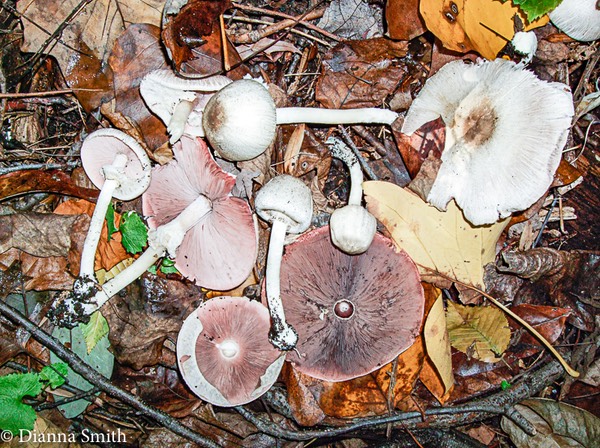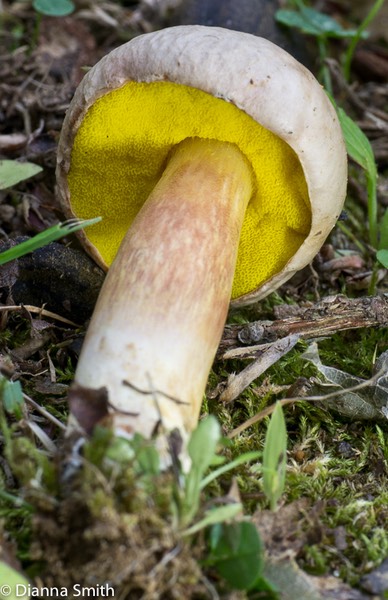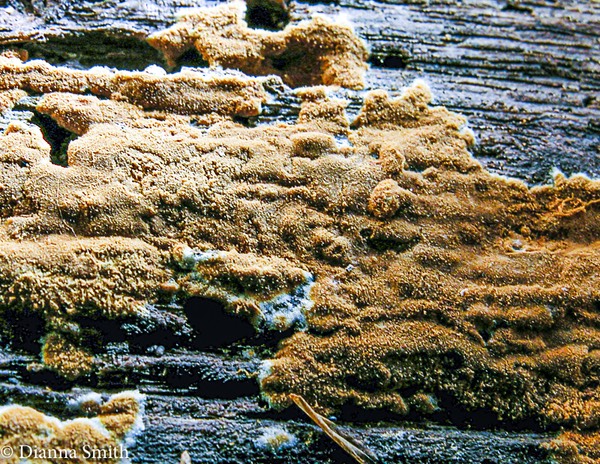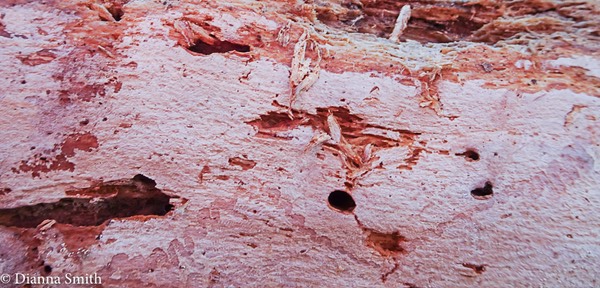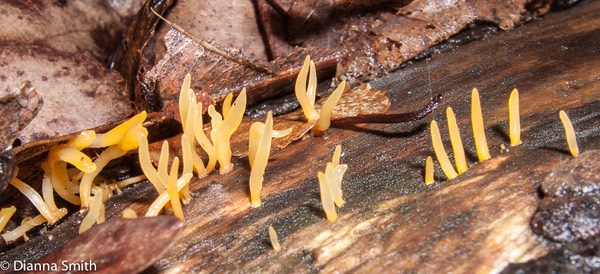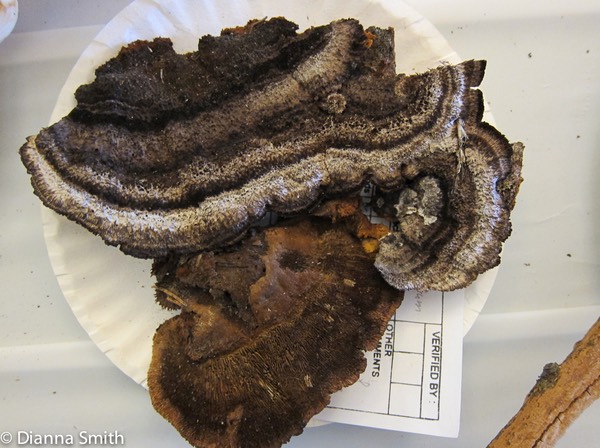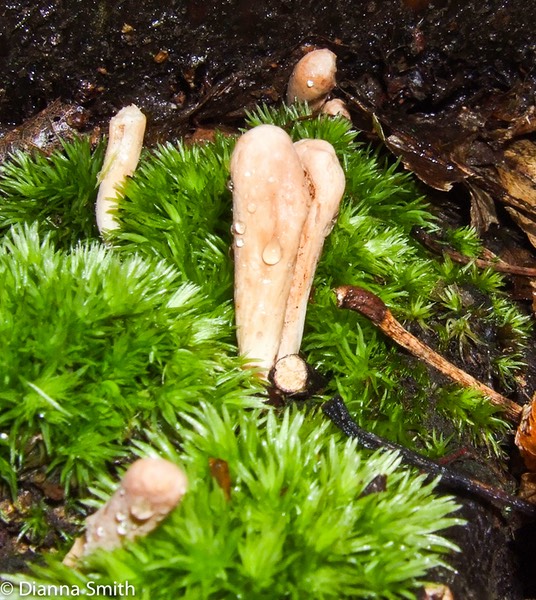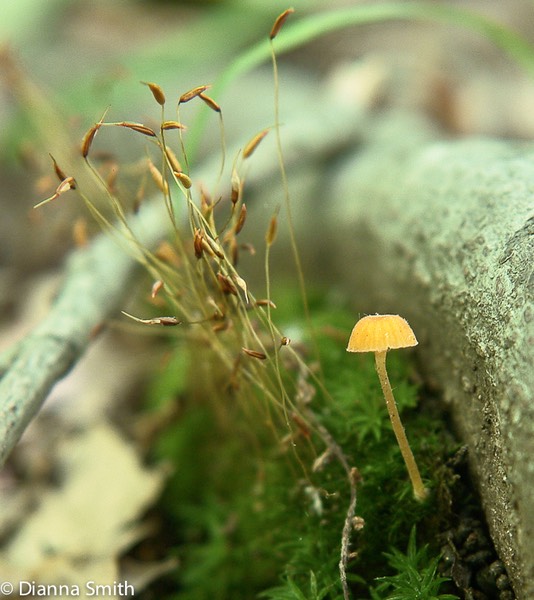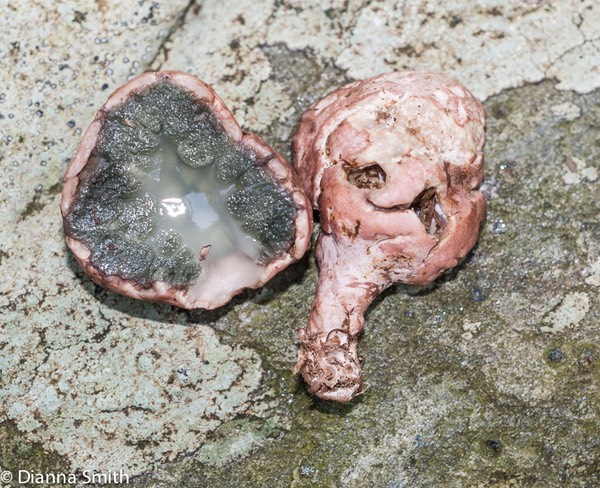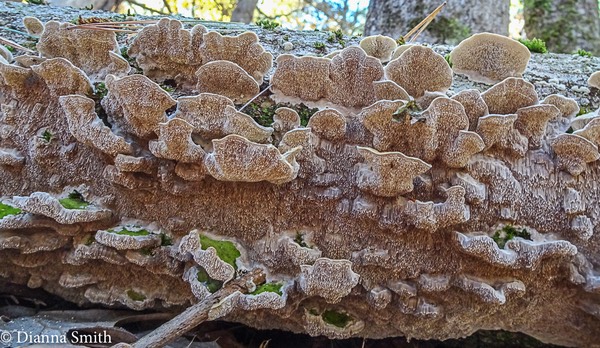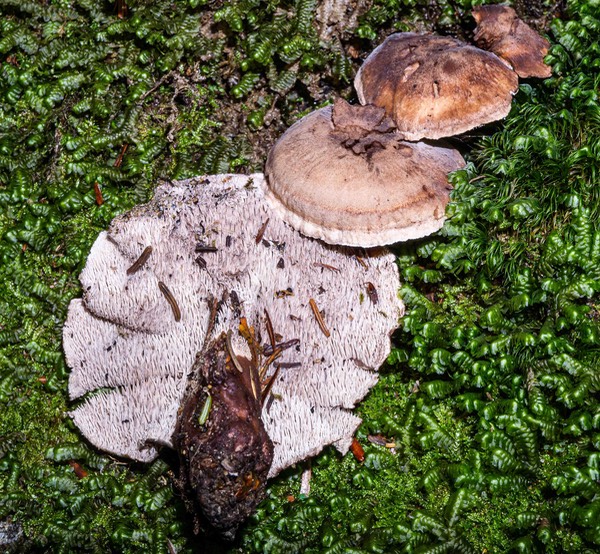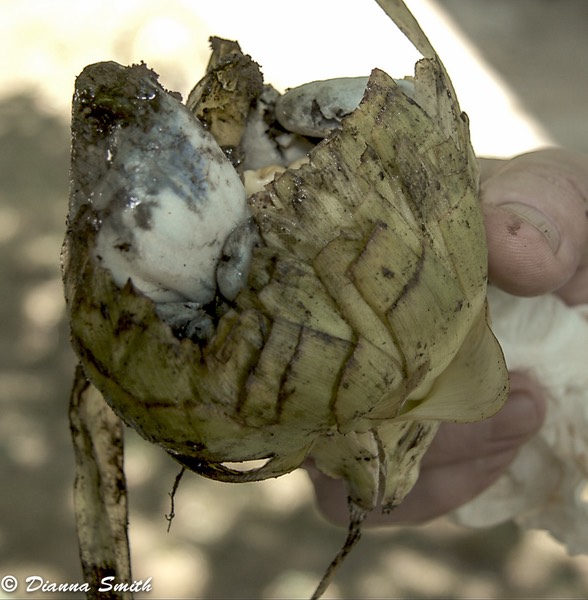Species of fungi within the basidiomycota have reproductive spores that are enclosed within club-shaped sacs called basidia. Each basidium typically has four spores (There are exceptions). Tiny projections on the end of each basidium are called sterigmata. As spores mature they are ejected from the sterigmata and are wafted away in air currents.
There are a growing number of orders and associated families within them in the basidiomycota. The largest order with the most associated families is the Agaricales.
Most cap and stem fungi with gills are often called ‘Agarics'. Such fungi as well as gilled fungi with short or no stems are in the AGARICALES order. There are also diverse other fungal shapes within this order such as puffballs, birds’ nest fungi, club and coral-like fungi, and even ‘polypores' in the Agaricales order. Some of the main families represented in the Agaricales order are: Agaricaceae; Amanitaceae, Bolbitiaceae; Clavariaceae; Cortinaceae; Crepidotaceae; Cephellaceae; Entolomataceae; Fistulinaceae; Hydnangiacae; Hygrophoraceae; Hymenogastraceae; Inocybaceae; Lyophyllaceae; Marasmiasiae; Mycenaceae; Omphalotaceae; Pysalarcriaceae; Pleurotaceae; Plutaceae; Psathyrellaceae; Schizophyllaceae; Strophariaceae; Tricholomataceae; Tubariaceae and the Typhulaceae.
Among others outside the Agaricales order are the following: Amylocorticiales, Auriculariales, Boletales, Cantharellales, Corticiales, Dacrymycetales, Geastrales, Gloeophallales, Gomphales, Hymenochaetales, Hysterangiales, Phallales, Polyporales, Russulales, Sebacinales, Thelephorales, Threchisporales, Tremellales, and the Ustiliaginales.
Most fungi do not have common names! Those that do often differ from one location to another and are therefore not reliable for naming purposes. We prefer to use proper scientific binomials. These binomials (2 names) incorporate the Genus and the species names of each fungus treated. According to custom, a mushroom’s scientific name is always italicized with the first letter of the genus capitalized. The species name is never capitalized.
The fungi treated on our website can be found in two ways:
1. Their binomial designations are arranged alphabetically in our Quick Links pages in accordance with their general shapes and textures. This method is commonly used for arranging photos and descriptions of fungi found in field guides.
SPONGE-PORED ‘BOLETES'; CANTHARELLOID (vase-like); CLUBS, CORALS & CAULIFOWERS; CRUST FUNGI & STEREUMS; GASTEROID FUNGI (spores enclosed within the fruiting body); GELATINOUS & RUBBERY FUNGI; GILLED MUSHROOMS with pale spores; GILLED with dark spores; LACTARIUS, LACTIFLUUS & RUSSULAS; POLYPORES; and TOOTHED FUNGI.
2. Advanced mycophiles who know the order of a particular fungus can simply click on the alphabetically listed orders below to find a particular family, genus and species.
Although not nearly as numerous as fungi in the Ascomycota, most members of the Basidiomycota are macro-fungi and are generally more visible representatives of the fungal kingdom in the eyes of fungi explorers.
With Basidiomycetes spores are produced and held within projecting club-like cells call sterigmata. In most cases, each basidium consists of 4 sterigmata projections and four spores (again, there are exceptions to this statement).
